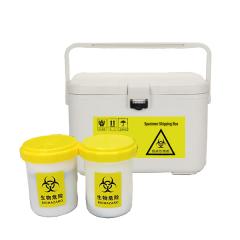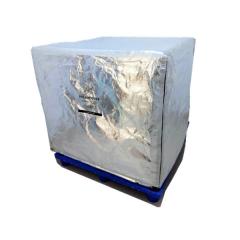In the contemporary global landscape, where viruses mutate rapidly and public health crises loom large, the role of cold chain logistics in vaccine distribution has become a cornerstone of global health security. The ability to deliver vaccines in optimal conditions is not just a logistical feat—it is a matter of life and death. This article explores the critical importance of cold chain logistics in ensuring the safe and effective distribution of vaccines, as well as the challenges and innovations that are shaping this vital field.

The Vital Role of Temperature Control in Vaccine Safety
Vaccines, like no other medical products, require precise temperature control during the entire distribution chain to maintain their efficacy and safety. The human body reacts differently to vaccines depending on the temperature at which they are administered. For instance, many vaccines must be stored at 2°C to 4°C to prevent bacterial growth and ensure the integrity of the active ingredients. At higher temperatures, these components can degrade, leading to potential allergic reactions, immune responses, or even the loss of therapeutic effect.
The cold chain process involves a series of temperature-controlled storage and transportation facilities. These include refrigerated warehouses, temperature-controlled trucks, and even automated packaging systems that maintain the required temperatures throughout the distribution process. Without this meticulous temperature management, the effectiveness of vaccines could be severely compromised, leading to preventable illnesses, increased healthcare costs, and potential public health crises.
Challenges in Cold Chain Logistics
Despite its importance, the cold chain logistics for vaccine distribution faces several significant challenges. One of the primary hurdles is the vast geographic scale of many vaccination campaigns. Vaccines must be transported from manufacturing facilities in major cities to rural and underserved areas, often over long distances. This requires the use of specialized transportation vehicles, such as refrigerated trucks and insulated ships, which are both expensive to operate and maintain.
Another challenge is the variability in vaccine requirements. Different vaccines have different temperature specifications—some must be stored at -196°C, while others can be distributed at room temperature. This necessitates a highly flexible and adaptable logistics system capable of handling a wide range of temperature requirements. Additionally, the cold chain must account for potential disruptions, such as equipment failures, natural disasters, or geopolitical instability, which could delay or compromise vaccine distribution.
Innovations in Cold Chain Technology
To address these challenges, researchers and industry experts are developing innovative solutions that enhance the efficiency and reliability of cold chain logistics. One such innovation is the use of automated temperature control systems that can monitor and maintain the required temperatures in real time. These systems often integrate with IoT (Internet of Things) devices, allowing for remote monitoring and predictive maintenance of cold chain equipment.
Another advancement is the development of temperature-sensitive packaging materials that provide visual cues to ensure proper storage conditions. For example, some vaccines are packaged in containers that change color or texture when exposed to temperatures above the safe range, serving as a simple yet effective quality control measure.
Moreover, advancements in transportation technology are also playing a crucial role. For instance, the use of insulated, energy-efficient trucks and ships has reduced fuel consumption and extended the shelf life of vaccines during transit. Additionally, the integration of data tracking systems allows for real-time monitoring of vaccine distribution chains, enabling public health officials to identify bottlenecks and address them promptly.
The Collaboration Between Governments and Industry
The success of cold chain logistics in vaccine distribution cannot be achieved alone. It requires close collaboration between governments, pharmaceutical companies, and technology providers. Governments must invest in infrastructure, such as temperature-controlled warehouses and transportation networks, while pharmaceutical companies must invest in research and development to create vaccines that are compatible with existing cold chain systems.
Additionally, international cooperation is essential to address the challenges of large-scale vaccination campaigns. For example, during the COVID-19 pandemic, countries worked together to establish vaccine distribution networks, sharing best practices and resources to ensure equitable access to vaccines.
Conclusion: A Call to Action
The importance of cold chain logistics in vaccine distribution cannot be overstated. It is not just a logistical challenge—it is a matter of global health security. By investing in innovation, collaboration, and infrastructure, we can ensure that vaccines are delivered safely and effectively to communities worldwide, safeguarding populations from preventable diseases.
In conclusion, the cold chain logistics system is indispensable to the global vaccination effort. It enables the timely and safe distribution of vaccines, which are critical tools in the fight against infectious diseases. As we face new threats and challenges, it is our collective responsibility to ensure that cold chain logistics remain robust, efficient, and accessible. Only through this commitment can we guarantee that vaccines reach the hands of those in need, ultimately saving lives and improving public health outcomes.

 magyar
magyar  English
English français
français русский
русский italiano
italiano español
español português
português العربية
العربية 日本語
日本語 한국의
한국의










